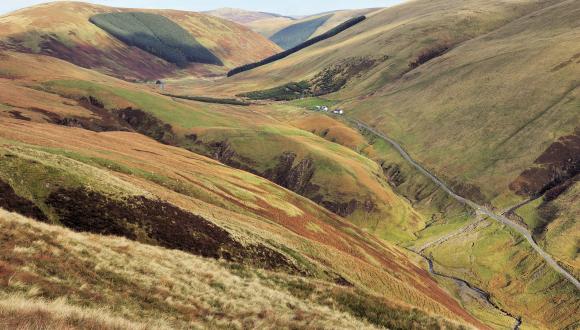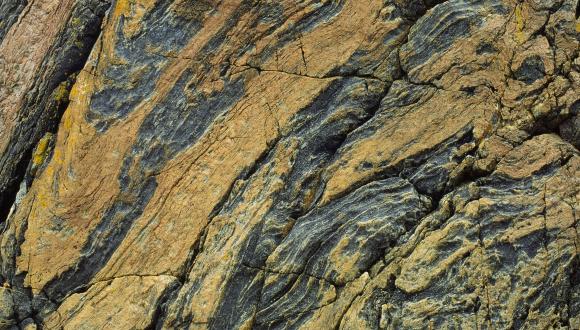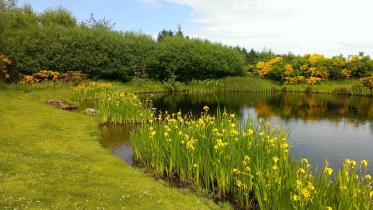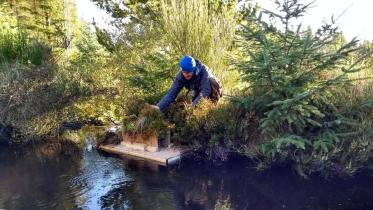Rocks formed since the foundations joined
Scotland once lay south of the equator. Its changing climate as it moved north caused the formation of different rocks.
Scotland experienced a continuing cycle of erosion and sediment deposition as the forces of continental drift moved it northwards.
Much of the rock formed during this time was sedimentary in nature, formed from sediments deposited in rivers, lakes and seas. At any given time, the type of rock formed – from sandstone to limestone and coal – depended on the climate and environment in Scotland then.
Caithness flagstone, which is full of amazing fossils, is formed from the muddy sediments rich in dead fish produced by a vast lake in a relatively arid climate.
Central Belt coal is formed from the dead vegetation that built up in swamps, which existed in the humid, tropical climate when Scotland lay on the equator.
Volcanic rocks also formed, initially due to stretching centred on the Central Belt and the resulting upwelling of hot magma. More volcanic activity occurred later with the opening of the North Atlantic Ocean. Volcanic rocks are usually harder than sedimentary rocks and often form mountain ranges or hills.







